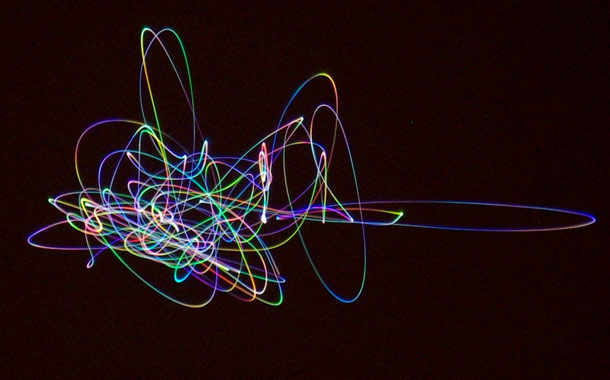Siriusly twinkling

If you live nearly anywhere on Earth -- those of you north of 73° you're out of luck, but I'm guessing there aren't many of you! -- and look to the southeast shortly after sunset, you'll see the figure of Orion. Follow the three belt stars to the east, and you'll see a bright star: Sirius, the brightest star in the night sky. If it's near the horizon, you may see it twinkling madly: flickering, dancing, perhaps even changing color.
This gave astronomer David Lynch an idea: take a time exposure of Sirius with a camera and telephoto, and purposely wiggle the mount. He tried it on January 4, 2012, and the result he got is actually quite lovely:
Isn't that cool? As the vibrating camera caused the star to trail around, the changing colors got recorded along the track. The changing brightness of Sirius can be seen as well, as parts of the loop-de-loop fade and intensify.
The reason stars twinkle is because of our atmosphere: little blobs of air are constantly in motion. These air parcels act like lenses, and as light passes through them, the path of the ray gets bent a little bit. That's what causes the dancing motion, the actual twinkling. Different colors get bent by different amounts (which is why prisms break up white light into separate colors).
While it's beautiful to our eyes, twinkling is a major pain to astronomers. It blurs our images! That's why we launch telescopes into space, or design fancy optics for ground-based telescopes to remove it. Twinkling is free, but correcting it sure ain't.
Lynch has several websites loaded with interesting pictures he's taken of nature, including Thule Scientific, Color and Light in Nature, and San Andreas Fault.
Image credit: David Lynch (used by permssion). Tip o' the Snell's Law to Earth Science Picture of the Day.





























